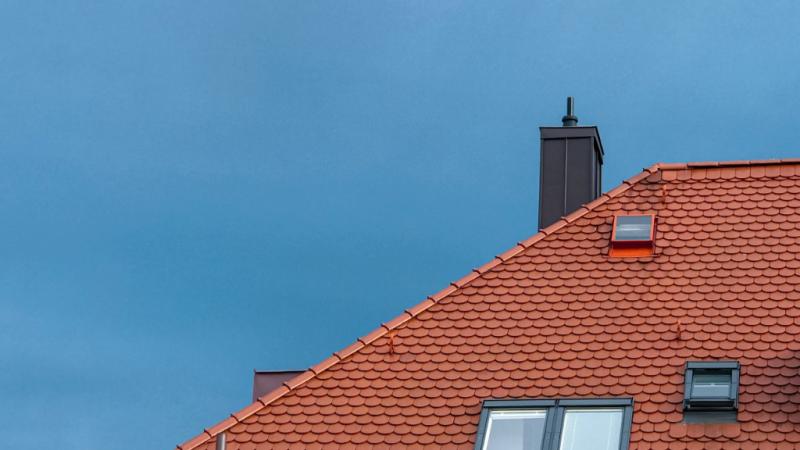How to Install Ridge Cap on Metal Roofs

When it comes to making your roof solid and secure, you can consider the unique touch of metal roofing ridge caps. If you're looking for both style and functionality, installing these caps not only adds a distinctive look but also ensures a watertight seal.
And, wondering how to go about it?
Well, this article has covered everything about installing ridge caps on metal roofing. You will learn everything, from measuring and cutting materials to nailing and sealing.
What is a metal roofing ridge cap?
Ever noticed the trim running along your roof's peak? That's the ridge cap, and it does more than just look good. It keeps out debris, insects, and rain. Now, whether you're dealing with solid or ventile closures, or opting for standing seam and shingle-style panels, ventilating ridge caps, or skylight ridge caps, the steps are straightforward.
Ridge caps are typically 10 to 12 feet long, and their usual sizes are 7” x 7” or 10” x 10”. Note that you can get them with or without hems for different looks and functions. If you're overlapping them, make sure there's a 6-inch overlap.
What are the benefits of installing a ridge cap on metal roofing?
Different roofs come in various styles, each with its own unique way of being set up. Most roofs, except flat ones, have two sloping sides that meet in the center or on the sides. Covering this meeting point is essential to stop water and ice from getting in.
- Protect the Roof Sections: A ridge cap covers the spots where the roof sections meet and protects them. Also, it helps keep the right temperature inside the house. This means less work for the HVAC system, saving energy and money.
- Keep House Secured: The roof ridge is a big help in keeping the house strong. By keeping out rain and snow, it protects structures like wooden roofs from soaking up water and rotting, making them last longer. If rainwater seeps through the roof, it can weaken the walls. The cold cement becomes a good place for mildew, which can cause allergies for homeowners.
- Prevent Insects: Ridge caps seal up the entire roof and make sure no insects or small animals get inside. This is important because these critters can mess with your HVAC system, make it less efficient, and even spread diseases to people, especially kids.
How much does a metal roofing ridge cap cost?
How much you pay for a metal ridge cap depends on a few things, like the thickness (gauge), the type of paint finish, and its size. Usually, a lighter gauge is cheaper than a heavier one, and a painted ridge cap costs more than a galvanized or galvalume one.
On average, you can expect a ridge cap to cost between $2.00 and $3.50 per foot.
Tools and supplies needed for metal ridge cap installation
Getting your metal roof's eave trim in place starts with having the right tools and supplies.
Here's what you'll need:
- Caulking gun
- Tape Measure
- Carpenter's pencil
- Cutting metal snips
- Circular saw
- Drill and drill bits
- Silicone sealant
- Roofing gloves that can resist cuts to protect against sharp edges
How do you install a metal roof ridge cap
Before adding the ridge cap, you need to get ready. Roofs can be different shapes, not all meeting in the middle. Some ridges are in the center, and others are on the sides, where two metal sheets come together. Make sure the metal sheet sits right in the middle. If it leans more on one side, it won't look good. Keep a 2-inch gap between the roofing sheets to avoid this and keep your roof looking nice.
Follow the step by step process to install a metal roof ridge cap:
Centering the Ridge Cap
- Place a ridge cap piece at the building peak.
- Mark the lower edges on both sides at one end of the ridge, using the illustration as a guide.
Spacing for Longer Ridges
- For shorter ridges (15'-20'), repeat step 1 at the opposite end.
- For longer ridges, repeat step 1 every 15' until reaching the opposite end.
Chalk Line Placement
- Set aside the ridge cap and use a chalk line between the marks, resulting in two chalk marks on each side of the full ridge length.
Closure Strip Placement
- Place outside closure strips along the ridge, on both sides, 1/4" above the chalk line.
- Run a sealant tape 1" above the chalk line on both sides.
- Install closure strips along the ridge, interlocking them and pressing them down on the sealant tape.
- Add another strip of sealant tape on top of the closure strips.
Ridge Cap Installation
- Install the first ridge cap piece at the end of the ridge.
- Check design instructions for flush or overhang placement.
- Center the ridge cap on top of the ridge using chalk lines as a guide, avoiding exposed sealant tape.
- Press the ridge cap down onto the closures to ensure good contact.
Fastening the Ridge
- Secure the ridge to the panels below using screws through every other major roof panel rib.
Continuing the Installation
- Lap the next ridge cap piece 6" over the first and repeat steps 5 and 6.
- Continue down the ridge until reaching the end, possibly requiring trimming for the final section to fit the ridge length.
What to Consider When Buying a Metal Ridge Cap
When you pick the right metal ridge cap among the many types and designs, it can be tricky. However, following these tips will make your job easier.
- Stick to Your Budget: Metal ridge caps come in various types and designs, each with different price tags. Start by setting a budget. Understand your preferences for roof and ridge cap styles, then check the market for price ranges. Choose a ridge cap that fits your budget while meeting your requirements.
- Know the Rules: Different states have different rules on building materials. Before making a decision, check your local laws. Ensure that your chosen ridge cap material and paint finish comply with regulations. This step ensures both a good look and legal compliance.
- Hire a Skilled Installer: Proper installation is crucial for the effectiveness of roof ridge caps. Get an experienced contractor with the right skills. Look into essential documents, like their license, to confirm their eligibility. Professional installation ensures your metal ridge cap performs well and lasts longer.
Final Talks
Putting on the ridge cap is the final step in roofing because it seals up the ridges. Make sure to install ridge caps properly to safeguard your home. Regularly check and replace any broken ridge caps to avoid issues with inefficient ridge protection.
And don't forget, having an experienced roofer is key for the best metal roof ridge cap installation. Hire a professional installer to ensure your roof works well.
Happy roofing!
More to Read:
Previous Posts:











